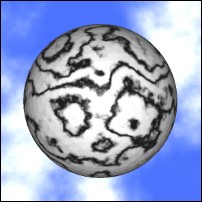


|
Justin's Image Gallery |
|||||||||||||||||||||||||||||||||||||||||||||||||||||||||||||||||||||||||||||||||||||||||||||||||||||||||||||||||||||||||||||
These pictures were all created with my own scanline rendering software. This grew from my class project for computer graphics classes ECS 175 and ECS 275, taught by Ken Joy. Except where noted, the models are also original.


Original fork mesh,
before subdivision
Final fork mesh,
after subdivision

Subdivision object modeled by Mark Duchaineau. Click here to see more examples of his work with subdivision objects.

Transparent Fork This fork was rendered with surface transparency. The thickness of the object does not affect the amount of light that passes through it.
Constructive solid geometry lets users design models using boolean operations in 3D space. Complex objects can be built by taking the union, intersection, or difference of simpler objects. main gallery page!

CSG Cube This object was created by starting with a blue cube. Six yellow boxes were subtracted from the sides, and then a red cube was then subtracted from the middle.

CSG Object Gallery This is a collection of various CSG objects.

CSG Picture #3 The blue parametric object above has been cut out of the red block below.
These pictures were created for ECS 275. They demonstrate my two class projects -- procedural textures and z-buffer shadows.

Chess Board This scene demonstrates four procedural textures: white marble, black marble, wood grain, and sky with clouds.

King These scene demonstrates z-buffer shadows. In addition to the shadows the king casts onto the chess board, notice the more subtle shadows the king casts onto itself.
These are my pictures of the original teapot data from Utah.




Fractal Cube This object is defined as 20 smaller versions of itself! It is interesting to note that in the limit, this object has zero volume and infinite surface area.

Mobster This model was created by Ron MacCracken. He took the mobster dataset from the avalon site and deformed it using his algorithm for Free-Form Deformations with Lattices of Arbitrary Topology.

Bumpy Bezier Patches 
The Silicon Graphics logo
